
The early human settlements in India, particularly at Mehrgarh (modern day Balochistan), signify one of the earliest known agricultural societies in the region. The Neolithic period, beginning around 7000 BCE, laid the foundation for the transition from nomadic lifestyles to settled farming communities. This shift not only fostered the growth of agriculture but also led to the development of trade, pottery, and weaving, which were pivotal in shaping the social and economic structures of these early societies. As the Indus Valley Civilization emerged around 2500 BCE, with prominent urban centers like Harappa and Mohenjo-daro, it showcased advanced urban planning, sophisticated drainage systems, and standardized weights and measures. The civilization’s decline around 1500 BCE is still a subject of debate among historians, with theories ranging from climatic changes and natural disasters to socio-economic factors leading to the migration of its people. The Indus Valley civilization ceased to exist before the world entered Iron Age (1000 BCE). However, several groups of inhabitants had already migrated away from the region further eastwards and down south to explore the possibilities for survival. With the onset of the Vedic period around 1500 BCE, following the Indo-Aryan migrations, the cultural fabric of India began to diversify. […]
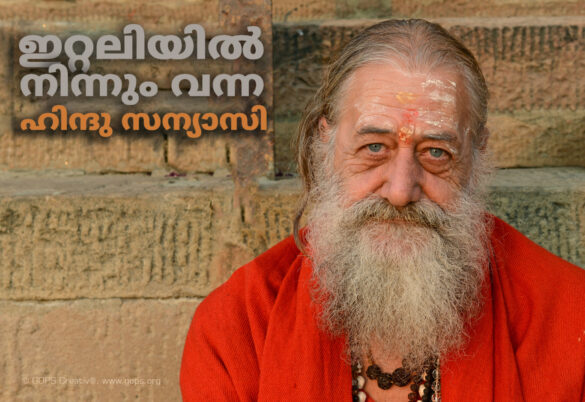
2014-ൽ ആയിരുന്നു എന്നാണ് എന്റെ ഓർമ്മ. വാരണാസിയിൽ ശൈത്യകാലത്തിന്റെ തുടക്കമായിരുന്നു. ഏതൊരു ഫോട്ടോഗ്രാഫറുടേയും സ്വപ്നലോകമെന്നു പറയപ്പെടുന്ന കാശിയുടെ തെരുവുകളിലൂടെയും, ഘാട്ടുകളിലൂടെയും ചിത്രങ്ങൾ തേടി അലഞ്ഞുതിരിയുന്നതിനിടയിലാണ് ബാബാ ശിവദാസിന്റെ മുന്നിൽ ഞാൻ എത്തിപ്പെടുന്നത്. ഒരുകൈയിൽ ചായ ഗ്ലാസ്സും മറുകൈയിൽ എരിയുന്ന സിഗററ്റുമായി ഉദയസൂര്യന്റെ ചൂടേറ്റിരിക്കുന്ന പാശ്ചാത്യ സന്യാസിയുടെ കാൻഡിഡ് ചിത്രങ്ങൾ ഒരു തൂണിന്റെ മറവിലിരുന്നുപകർത്താനുള്ള എന്റെ ശ്രമം സ്വകാര്യതയിലേക്കുള്ള കടന്നുകയറ്റമാവാമെന്ന് എനിക്ക് ആശങ്കയുണ്ടായിരുന്നു. പെട്ടെന്നായിരുന്നു എന്നെ ഞെട്ടിച്ചുകൊണ്ട് ബാബ തല വെട്ടിത്തിരിച്ച് ചൂണ്ടുവിരൽ കൊണ്ട് ആംഗ്യം കാണിച്ചു തീഷ്ണമായ ഒരു നോട്ടത്തോടെ, എന്നോട് ഉറക്കെവിളിച്ചു പറഞ്ഞത്, “ഹേയ്, കം ഹിയർ!”. മുൻപ് നാഗാസന്യാസിമാരിൽ നിന്നുണ്ടായിട്ടുള്ള ദുരനുഭവങ്ങൾ ഓർത്തപ്പോൾ അല്പം ഭയം തോന്നിയെങ്കിലും, ഞാൻ ധൈര്യം സംഭരിച്ച് അദ്ദേഹത്തിന്റെ അടുത്തേയ്ക്ക് നടന്നടുത്തു. എന്റെ പ്രതീക്ഷകൾക്ക് വിരുദ്ധമായി അദ്ദേഹം ഒരു മൃദുഭാഷിയും, സമാധാനപ്രിയനും ആയിരുന്നു. ഒളിഞ്ഞിരുന്നു ഫോട്ടോ എടുക്കുന്നത് ഒരു നല്ല പ്രവണതയല്ലെന്നും, ചോദിച്ചാൽ എത്ര ചിത്രങ്ങൾ വേണമെങ്കിലും എടുക്കുവാൻ അനുവാദം തരുമല്ലോ എന്നും ഉപദേശിച്ചു. ഞാൻ അദ്ദേഹത്തോടു ക്ഷമാപണം നടത്തി സംസാരത്തിലേക്കുകടന്നു. അതിനിടയിൽ ബാബയുടെ കുറച്ചു ക്ലോസപ്പ് ചിത്രങ്ങൾ പകർത്തുകയും ചെയ്തു. ക്യാമറയുടെ വ്യൂഫൈൻഡെറിലൂടെ ആ നീലക്കണ്ണുകൾ മുത്തുകൾ പോലെ തിളങ്ങി. ഗംഗാനദിയും ഉദിച്ചുയരുന്ന സൂര്യനും ആ കണ്ണുകൾക്കുള്ളിൽ പ്രതിഫലിച്ചു. ഗംഗ താങ്കളുടെ കണ്ണുകൾക്കുള്ളിലൂടെ ഒഴുകുന്നു എന്നു ഞാൻ പറഞ്ഞപ്പോൾ അദ്ദേഹം പൊട്ടിച്ചിരിച്ചു. ആ ചിരിയും ഞാൻ ക്യാമറയിൽ പകർത്തി. അതിനുശേഷം ഈ കണ്ടുമുട്ടൽ ഞാൻ മറന്നു പോയെങ്കിലും, ചിത്രങ്ങൾ ഹാർഡ് ഡിസ്കിന്റെ അടിത്തട്ടിൽ എവിടെയോ മറഞ്ഞുകിടക്കുന്നുണ്ടായിരുന്നു. കുറച്ചു നാൾ മുൻപ് ബാബ ശിവദാസിനെക്കുറിച്ചുള്ള ഒരു യുറ്റ്യൂബ് വീഡിയോ കാണാനിടയായപ്പോഴാണ് 10 വർഷങ്ങൾക്കു മുൻപെടുത്ത അദ്ദേഹത്തിന്റെ ചിത്രങ്ങൾ വീണ്ടും തിരഞ്ഞുകണ്ടൂപിടിക്കാൻ എനിക്ക് ആഗ്രഹം തോന്നിയത്. 1974-ൽ അലസ്സാൻഡ്രോ എന്ന 22-കാരനായ ഇറ്റാലിയൻ പൗരൻ ഇന്ത്യയിൽ വന്നിറങ്ങി. സംഗീതത്തോടുള്ള അഭിനിവേശമായിരുന്നു ആ ലീഡ് ഗിറ്റാറിസ്റ്റിനെ വാരണാസിയിൽ എത്തിച്ചത്. പക്ഷേ, അധികം വൈകാതെതന്നെ അദ്ദേഹം ആത്മീയതയുടെ മായിക ലോകത്തിൽ ആകൃഷ്ടനാവുകയും, തന്റെ വിധിയാണ് തന്നെ വാരണാസിയിൽ എത്തിച്ചതെന്ന് വിശ്വസിക്കുകയും ചെയ്തു. […]

When I used to spend time with the adorable jumping spiders in my garden a few years ago, I had no idea that these little creatures were such rare finds in the biological world. It’s fascinating to think that something so small could be of such interest to researchers. I recently came across some fascinating information about the ‘Chrysilla Volupe’, a species believed to have been extinct for over 150 years. Surprisingly, it was rediscovered at the Wayanad Wildlife Sanctuary in 2018. More recently, there have been sightings of this species during the cleanup of Puttenahalli lake in Bangalore. Interestingly, I had been observing these remarkable creatures in my home in Kottayam, Kerala long before these sightings. I made several attempts to capture them on camera, but these energetic little jumping spiders proved to be quite the challenge to photograph with a macro lens. Here are some interesting details about these fascinating creatures: 1. These spiders belong to the family of jumping spiders (Salticidae). 2. The male spider has a reddish tint on its head with two distinct lines of fluorescent blue on top. Its entire body displays iridescent rainbow-like colors that appear different from various angles. Males […]
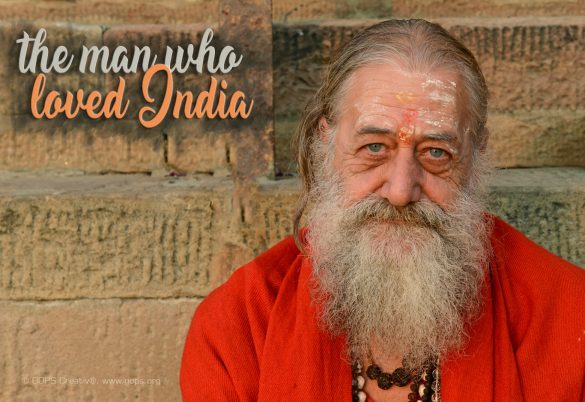
In the winter of 2014, I found myself wandering the ghats of Kashi in Varanasi, searching for captivating photo-stories. It was during one of these strolls that I encountered Baba Shiv Das, basking in the warmth of the rising sun with a cup of tea in one hand and a cigarette in the other. The photographer in me couldn’t resist capturing a few candid shots, though I felt a twinge of guilt about invading his privacy. To my surprise, Baba Shiv Das turned his head, fixed me with an intense gaze, and beckoned with his index finger, saying, “Hey! Come here.” Despite my initial apprehension due to past encounters with arrogant sadhus, I decided to approach him. To my delight, Baba Shiv Das was kind, peaceful, and soft-spoken. He gently advised me that photographing people without their knowledge was inappropriate. When I apologized, he graciously granted me permission to take some close-up shots. Captivated by his charming blue eyes, which glittered like pearls through my viewfinder, I mentioned that the river Ganga seemed to flow through his eyes. He burst into laughter, and I quickly captured that moment on film as well. After the photo shoot and a brief conversation, […]

Today marks National Girl Child Day in India. Observed annually on January 24, National Girl Child Day aims to raise awareness about gender inequalities in Indian society. This day brings to mind an old story that I’ve long wanted to publish as a photo feature. I once encountered a teenage girl drying corn kernels under the scorching sun in the Hampi region of Karnataka. The intense summer heat had already taken a toll on her delicate skin, visible through her tattered clothing. Small sticks pierced her ears, and a black thread around her neck served as her only adornment—likely the only ornaments she could afford. After speaking with her, I learned that the dried corn would be sent to a Kellogg’s factory to be processed into cornflakes and cereals for the wealthy. When I asked if she liked cornflakes, she burst into laughter and confessed that she had never tasted anything other than rice and sambar. I shamelessly captured that ‘laughter of poverty’ on film—a poignant symbol of the downtrodden in India.
Observe the droplets, shadows, moss, mold, rust, lichens, fungi, and more! Art is woven into every corner of the world. Open your eyes wide to appreciate Mother Nature’s masterpieces.
I search for that artistic essence in everything; in water, scattered clouds, the earth’s muck, on wood or leaves that have fallen. By chance, I discovered these laterite stone blocks while building my home. This type of soil is abundant in iron ore, aluminium (bauxite), and various other minerals, giving the material a rich palette of colors. Some of the stones’ cross-sections resembled stunning abstract art pieces, and I found myself unable to resist capturing those moments on camera. Here are a few examples:

In the end, what’s the point in worrying about those poor scavengers? However, these tiny creatures called Dung Beetles are actually far better than a lot of other animals in some ways. I had the opportunity to watch these small insects engaged in their habit of rolling in poop. These beetles are part of a group called Scarabaeoidea, and they typically eat dung or feces, and are often seen rolling the dung into balls to take back to their homes. As one of the planet’s oldest inhabitants, they developed alongside the dinosaurs that roamed 115 million years in the past. Currently, there exist more than 7000 distinct species of dung beetles. These insects are also depicted in ancient Egyptian writings, including Hieroglyphics. The astonishing truth about these tiny creatures is their incredible ability to lift heavy objects. While the strongest man on Earth can lift 2.3 times his own weight, a dung beetle has the strength to lift 50 times its body weight! And they do this by pushing with their back legs while balancing upside down, similar to a gymnast. In scientific experiments, a male horned dung beetle was found to be able to lift a weight that […]
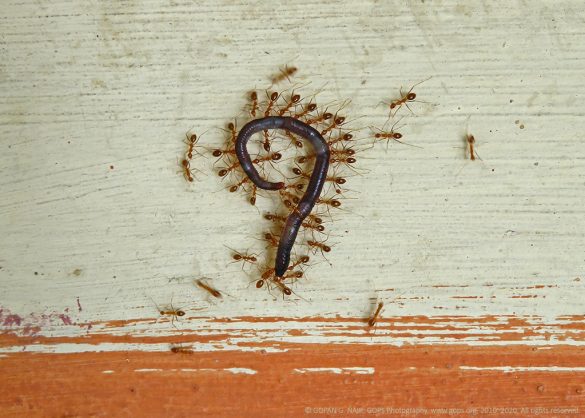
“THE SIGN OF ALLAH [ Arabic: الله ]” I frequently find myself puzzled by how faith and fate are intertwined. Whenever I was short on photography subjects, something unexpected would suddenly present itself. It was on one particularly scorching day in India, as I was on the hunt for the perfect subject for my photographs. To my surprise, a nutmeg fruit dropped right in front of me, splitting open to reveal two halves. The vibrant red mace encircling the black seed gave it a heart-like appearance. Although each seed is unique, this one seemed oddly distinct. Upon closer inspection through my camera lens, I noticed an Arabic word that looked like ‘Allah’. Whether this was a mere coincidence or a figment of my overactive imagination, I can’t say. Regardless, I feel that the heart-shaped nut with the word ‘Allah’ inscribed on it was sending me a message. “THE SECRET OF HAPPINESS” The secret of happiness is freedom. The secret of freedom is courage. Freedom is the most valuable treasure one can possess. Goals, desires, and principles are worthless without the liberty to chase them. A vision that depicts a world free from all limits, all constraints. The image of freedom […]

Water holds a sacred place in Indian culture, being revered as one of the ‘Panch Bhootas’ (Five elements of life) since ancient times. It is believed that life began in water, and the future progress will be centered around it. The foresight of great Indian rulers ensured the survival of the desert state of Rajasthan in the face of nature’s challenges. In the little-known town of Abhaneri near Jaipur, India, one can find the World’s largest step-well. Originally known as Abha Nagari (The City of Brightness), it was established by King Raja Chand of the Nikumbha Dynasty between the 8th and 9th centuries AD. Ancient Hindu wisdom emphasized the interconnectedness of worship places and nature as a means of protecting the environment. This is demonstrated by the presence of ancient temples in India, often accompanied by functioning wells or ponds. King Chand’s legacy lives on in the form of the magnificent Baori, (step-well or step-pond, बावड़ी or बावली) built in Abhaneri around 825 AD. This architectural marvel, Chand Baori (Chand bawadi in local tongue) measuring 35 meters on each side, 19.5 meters deep, and adorned with 3500 steps in intricate geometric patterns, continues to captivate visitors from all corners of […]
Check out these breathtaking snapshots capturing the rich essence of enchanting Hampi. As the title suggests, Hampi is a place that stirs up a range of emotions. It’s a paradise for wanderers, a treat for history buffs, and a goldmine for photography enthusiasts. Immerse yourself in the allure!
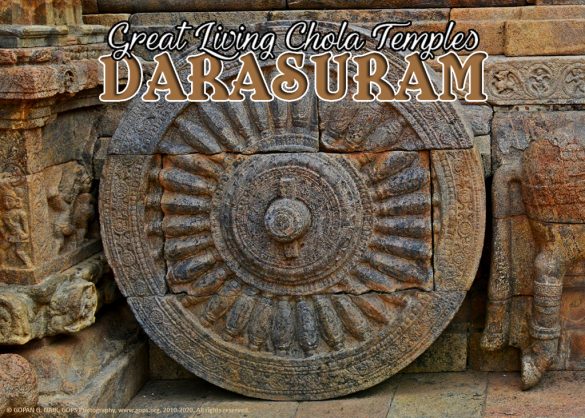
The Chola Dynasty, which thrived from 300 BC to 1279 CE in Southern India, were devout followers of Shaivism and ardent supporters of arts, literature, and poetry. The Chola Kings, also known as “சோழர்” in Tamil, held a significant position among the rulers of India. They were renowned for constructing numerous Shiva Temples across the world, many of which still stand today. The collection of three remarkable architectural wonders, known as ‘The Great Living Chola Temples,’ were constructed by the Chola Kings and can still be found in Thanjavur, Gangaikondacholapuram, and Darasuram in Tamil Nadu. These temples stand out for their distinctive Dravidian architecture and exceptional artistic craftsmanship. The Brihadeeswarar temple ( Read about it here ) , also known as the Big Temple or Peruvudaiyar Kovil, situated in Thanjavur, was completed in 1010 AD by Emperor Raja Raja Chola I (985–1014 AD). This magnificent temple, which celebrated its 1000th anniversary in 2010, is among the largest temples in India and has been designated as a UNESCO World Heritage Monument. Rajendra Chola-I (1012-1044 AD), the son of the renowned Rajaraja-I, expanded the kingdom as far as the Ganga River in the North and earned the title Gangaikondacholan. He was a […]

The group of three magnificent architectural wonders dating back to the Medieval Chola period are collectively known as ‘The Great Living Chola Temples’, and are still standing proudly in Thanjavur, Tamil Nadu. These remarkable temples, Brihadiswara (<click), Gangaikondacholapuram and Darasuram (<click) , are celebrated for their exceptional Dravidian architecture, profound scientific knowledge, and astonishing artistic craftsmanship. Before delving into this page, I recommend acquainting yourself with the story of Raja Raja Chola and his monumental creation, the Brihadiswara Temple. Rajendra Chola-I (இராசேந்திர சோழன்), the son of the illustrious Rajaraja-I, reigned from 1012 to 1044 AD. Renowned for his conquest that extended as far north as the Ganga river, he was conferred the title Gangaikondacholan, signifying ‘The Chola who brought Ganga.’ Rajendra, commanding one of the most formidable naval forces of his time, subsequently expanded his father’s kingdom across distant shores. His reign witnessed the Chola Kingdom’s dominion over large swathes of Southern India, as well as territories in Northern India such as Kalinga (present-day Orissa), Bihar, and Bengal/Bangladesh. Moreover, their influence extended to foreign regions including Sri Lanka, Burma, Bali, Java, Sumatra, Kadaram (now Kedah in Malaysia), and Cambodia. It is notable that the Hindu traditions observed in Indonesia and […]

‘The Great Living Chola Temples’, a group of three magnificent architectural marvels, were constructed during the Medieval Chola period and continue to stand proudly in Thanjavur, Tamil Nadu. These extraordinary temples – Brihadiswara, Gangaikondacholapuram (<click) and Darasuram (<click) – are renowned for their Dravidian architecture, advanced scientific knowledge, and exceptional artistic craftsmanship. During my explorations of the history of the Chola empire, I had the opportunity to witness the entire life cycle of a dynasty that governed nearly all of Southern India for an extensive period. While the precise origins of the Chola dynasty remain ambiguous, it is thought that they coexisted with Ashoka around 300BC and maintained their dominance until 1279AD. Similar to many influential civilizations situated near rivers, the Chola territory was also established around the Kaveri river basin, and their remarkable legacy endures through the grand temples they constructed in the area. Among the prominent Chola rulers, Raja Raja Cholan and his son Rajendra Cholan stand out as leaders who oversaw the prosperous era during the 460-year Chola reign. The Cholas boasted one of the most formidable naval forces of their time, enabling them to capture the northern half of Sri Lanka in 996AD. Towards the conclusion […]
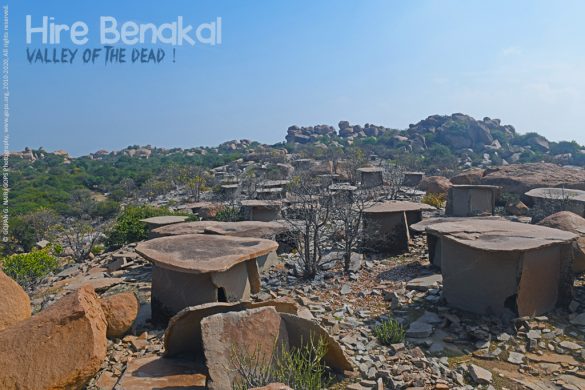
We had the chance to explore the remnants of a once great civilization in Hampi. Together, we ventured back in time to experience the blend of myth and history in Anegundi. We also delved into the traces of early human settlements in the area and examined the primitive cave paintings at Onake Kindi. Now, let’s journey even further into the past to the enigmatic ‘valley of the dead’, where the history of ancient human habitation peacefully resides. Hire Benakal (also known as Hirebenakal or Hirebenkal ಹಿರೇಬೆಣಕಲ್) is a serene village adjacent to Anegundi, located approximately 50 km from Hampi. This impressive megalithic burial site in Karnataka, India, is believed to be around 3000 years old and is recognized as one of the largest necropolises in the region. Referred to as ‘Elu Guddagalu’ in the Kannada language, which translates to ‘Seven hillocks’, the site comprises approximately 400 megalithic structures (dolmens) that were constructed between 800 BCE to 200 BCE, spanning the period from Neolithic to the Iron Age. The initial documentation of this site dates back to 1835 during the British rule, when Philip Meadows Taylor’s findings were published in the Journal of the Royal Asiatic Society. While the Archaeology Survey […]
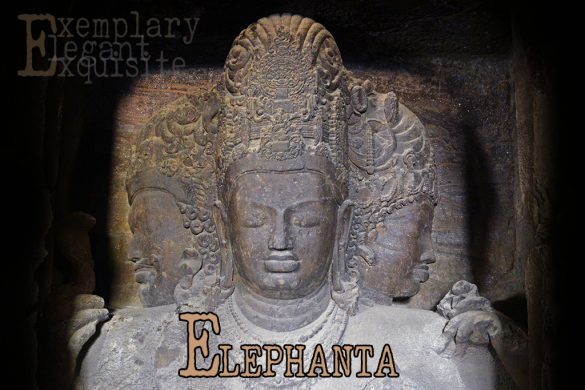
The relentless bombardment from the artillery persisted for weeks and months, despite the absence of any actual enemies in the vicinity. Surprisingly, it was the Portuguese soldiers who were using the cannons to target the imposing rock sculptures in Elephanta Caves as part of their training exercises. Reflecting on the historical timeline of explorations, invasions, and colonization, it becomes evident that bloodshed and devastation were the unwelcome companions of each successful event. Descendants of the ruthless invaders who reduced the treasures of a magnificent country to mere rubble and sand should feel remorseful for the actions of their ancestors. While we proudly extol the rich culture and heritage of India, it is disheartening that these distressing truths are frequently overlooked. The ancient island kingdom near Mumbai harbour was known as Gharapuri, which translates to ‘City of Caves’ in Marathi. Evidence of early settlement dating back to the 2nd century BC can still be seen on this little island. For travelers in Mumbai, it offers a quick escape from the bustling city life. The island is made up of two small hillocks on its eastern and western sides, separated by a narrow ravine. Carved caves and sculptures made of Basalt rock, […]

The earthy aroma that wafts into the air when rain kisses the dry soil after a prolonged dry spell, known as ‘petrichor,’ holds a captivating allure. This delightful fragrance, stemming from the Greek words ‘Petra’ (stone) and ‘Ichor’ (the fluid flowing through the veins of Gods), is deeply intertwined with our ancestral reverence for rain as a life-giving force. Scientifically, this phenomenon occurs as raindrops stir the earth’s pores, releasing minuscule bubbles of plant oils, bacteria, and ozone into the atmosphere. While excessive ozone can pose risks to human health, the amount released during this enchanting event is negligible, allowing us to relish the revitalizing essence of petrichor without concern. I believe we’re straying from our main topic. Let’s shift our focus to places where rain is a daily occurrence. In the northeastern part of India, there’s ‘Cherrapunji’, which was previously known as the wettest place on Earth and still holds the Guinness Book record for the highest recorded rainfall in a location. Nestled in the heart of the Western Ghats, the lesser-known gem of ‘Agumbe’ has earned the title of the ‘Cherrapunji of South India’ owing to its intimate relationship with rainfall. The lush tropical rainforest of Agumbe is […]

The Ellora Cave Complex, located 29 kilometers North-West of Aurangabad, a prominent city situated 300 kilometers away from Mumbai in India, is a fascinating historical site. Originally known as Elapura, the complex consists of temples and monasteries dedicated to Buddhism, Hinduism, and Jainism, dating back to between 600-1000 AD. Carved out of volcanic basalt rock, this extraordinary group of caves showcases the rich religious and cultural history of the region. Although a hundred caves have been discovered, only 34 are currently accessible to the public, offering a glimpse into the ancient heritage of the area. Long ago, the Deccan plateau was shaped by ancient volcanic activity, as molten lava cooled and solidified into layers of basaltic rock. Evidence of early human settlements dating back thousands of years has been discovered in this region, indicating its historical significance. Ellora’s strategic location near a prominent trade route, dating back to the Satavahana dynasty (271 BC to 30 BC), likely contributed to its continual inhabitation and preservation unlike the nearby Ajanta caves. While the exact construction period remains unknown, it is believed that the remarkable architecture of Ellora was a legacy of King Krishna#1 of the Rashtrakuta dynasty (760 AD). Detailed descriptions of […]
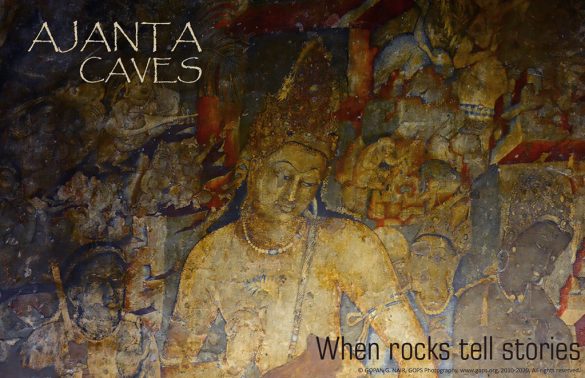
Located approximately 450 kilometers away from the vibrant city of Mumbai, ‘Ajanta’ stands as a testament to the rich tapestry of ancient Indian art, architecture, culture, and religion. These magnificent cave temples showcase the seamless integration of various elements that define the splendour of India’s heritage. Ajanta is home to a remarkable collection of 29 Buddhist monasteries and sanctuaries, representing the Theravada and Mahayana Buddhist traditions. These stunning architectural marvels date back to the period spanning from the 2nd century BC to the 6th century AD. Despite being deserted and concealed for millennia, a group of British soldiers stumbled upon this extraordinary site in 1819, bringing it back into the light after years of obscurity. Located approximately 104 kilometers away from the vibrant city of Aurangabad in Maharashtra, the river Waghora gracefully cascades down in a series of seven steps, giving rise to a tranquil pool known as Saptakund. As it continues its journey, the river flows through a narrow, winding gorge nestled beside a striking, horse-shoe shaped rock. The caves, a testament to incredible craftsmanship and precision, are meticulously carved into the sheer vertical face of this rock. Evident from the rock’s formation and geological characteristics, it is believed […]
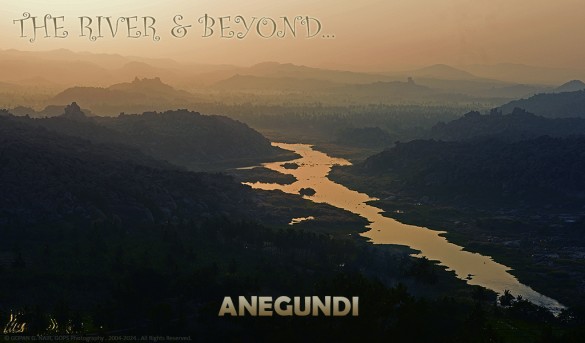
Let’s take a journey back in time as we explore the history spanning over 5000 years. Our story begins with the river Pampa (Tungabhadra), the lifeblood of a great civilization that once thrived in the southern state of Karnataka in India. Anegundi is a serene village located just opposite to Hampi, on the northern bank of the river Tungabhadra; a place where evolution, history, mythology and folklore intertwine. The name Anegundi (or Anegondi, ಆನೆಗುಂದಿ/ಆನೆಗೊಂದಿ) originates from the Kannada language, meaning “Elephant pit.” It was the early capital of the Vijayanagara empire before it was moved to Hampi, possibly deriving its name from the king’s elephant stables that were originally situated here. For more in-depth information about Hampi & the Vijayanagara empire, you can look at [here]. According to experts in earth sciences, the rock formations in this area are estimated to be around 3000 million years old, making it one of the oldest plateaus on our planet. This suggests that it was among the first locations to solidify during the earth’s cooling process. Anegundi has been identified as having traces of early human settlements. The presence of Neolithic (Stone Age) burial grounds and primitive cave paintings in this area attracts […]